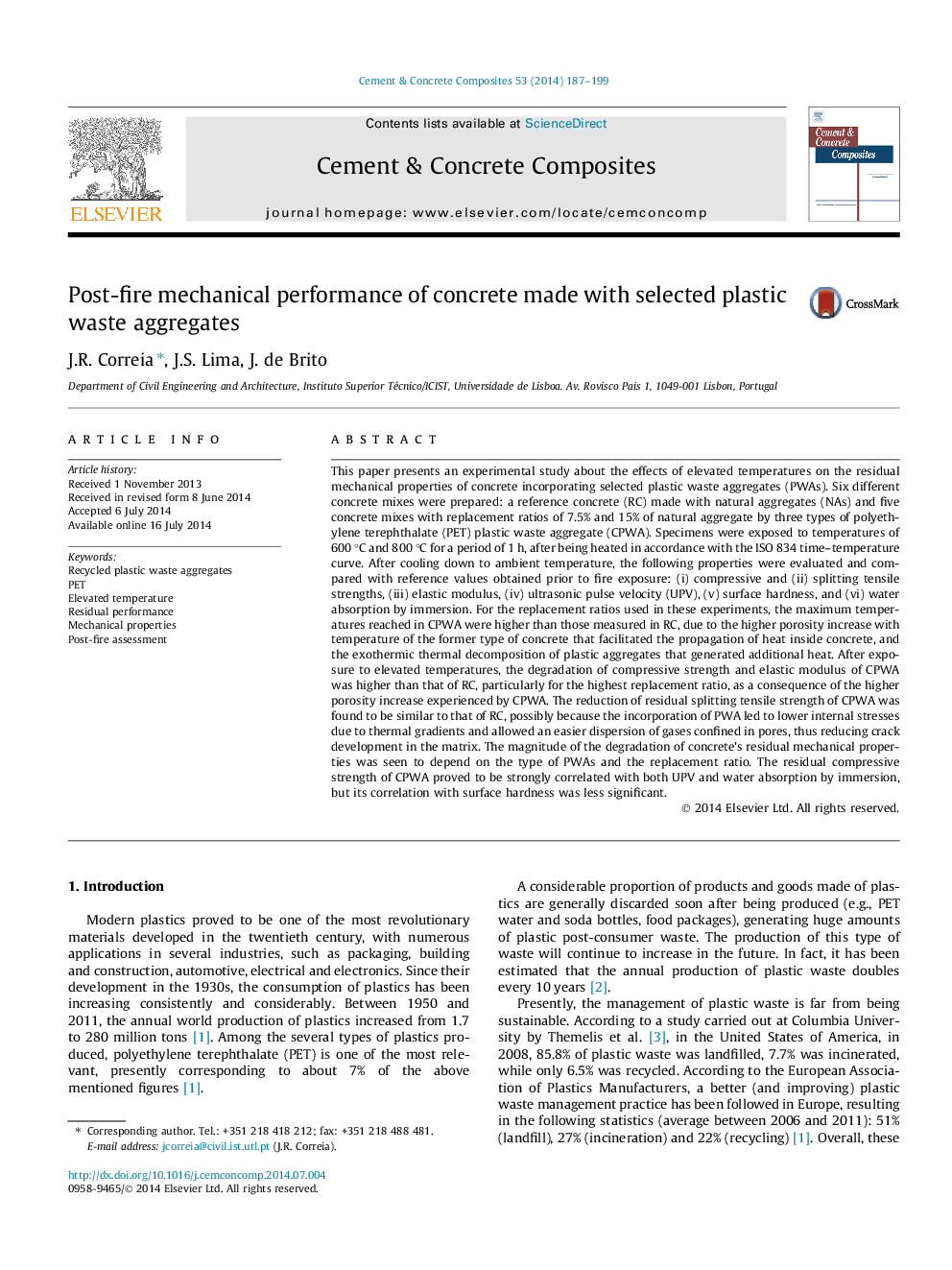| کد مقاله | کد نشریه | سال انتشار | مقاله انگلیسی | نسخه تمام متن |
|---|---|---|---|---|
| 1454556 | 1509680 | 2014 | 13 صفحه PDF | دانلود رایگان |
This paper presents an experimental study about the effects of elevated temperatures on the residual mechanical properties of concrete incorporating selected plastic waste aggregates (PWAs). Six different concrete mixes were prepared: a reference concrete (RC) made with natural aggregates (NAs) and five concrete mixes with replacement ratios of 7.5% and 15% of natural aggregate by three types of polyethylene terephthalate (PET) plastic waste aggregate (CPWA). Specimens were exposed to temperatures of 600 °C and 800 °C for a period of 1 h, after being heated in accordance with the ISO 834 time–temperature curve. After cooling down to ambient temperature, the following properties were evaluated and compared with reference values obtained prior to fire exposure: (i) compressive and (ii) splitting tensile strengths, (iii) elastic modulus, (iv) ultrasonic pulse velocity (UPV), (v) surface hardness, and (vi) water absorption by immersion. For the replacement ratios used in these experiments, the maximum temperatures reached in CPWA were higher than those measured in RC, due to the higher porosity increase with temperature of the former type of concrete that facilitated the propagation of heat inside concrete, and the exothermic thermal decomposition of plastic aggregates that generated additional heat. After exposure to elevated temperatures, the degradation of compressive strength and elastic modulus of CPWA was higher than that of RC, particularly for the highest replacement ratio, as a consequence of the higher porosity increase experienced by CPWA. The reduction of residual splitting tensile strength of CPWA was found to be similar to that of RC, possibly because the incorporation of PWA led to lower internal stresses due to thermal gradients and allowed an easier dispersion of gases confined in pores, thus reducing crack development in the matrix. The magnitude of the degradation of concrete’s residual mechanical properties was seen to depend on the type of PWAs and the replacement ratio. The residual compressive strength of CPWA proved to be strongly correlated with both UPV and water absorption by immersion, but its correlation with surface hardness was less significant.
Journal: Cement and Concrete Composites - Volume 53, October 2014, Pages 187–199
